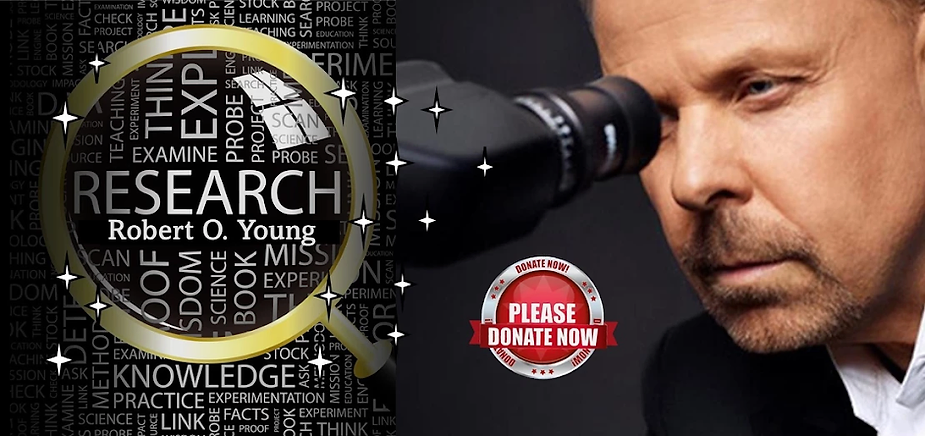Dr. Robert Young Awakens an Old Debate in Virology That May Have Important Implications In COVID-19 Origins!
Updated: Dec 22, 2023
Charles Wright

Dr. Young says that viruses are the result of disease, not the cause of them. This is not a new debate. It’s an old debate. So old that most people like me have never heard of it. We were taught the modern germ theory. I’ll recap a little bit of Young’s article, but it’s a must read. It’s far too long and detailed to summarize. I have a few points to make about the pharmaceutical industry in general, then I’ll get to the really profound implications of what Dr. Young is saying as applied to the COVID-19 Pandemic.
HISTORY OF VIRUS
In 1892, Dimitri Iwanowski of Russia was the first to isolate what came to be called a “virus.” Iwanowskin tried to filter liquids from diseased tobacco plants to remove “bacteria.” It didn’t work. Something passed through the filter and still made tobacco plants sick.
In 1891, Paul Ehrlich, the German physician and scientist, had tested the first synthetic, non-natural substance to be used in “medicine.” It was methylene blue, a chemical used as a blue dye. Ehlrich claimed methylene blue was a substitute for Quinine, the standard treatment for malaria the world over. This was the birth of chemotherapy, described then as the “magic bullet” theory- targeting one small item such as the malaria virus with one specific chemical.
This is also a origin of financial conflict of interest in science. Whereas Dr. Young today is saying viruses are a product of disease, Ehlrich, one of the founders of chemotherapy, said viruses were the cause of disease, and should be targeted with chemicals to achieve health. So they’re selling chemicals based on a scientific theory, in other words.
In 1898, Dutch botanist Martinus Willem Beijerinck repeated Iwanowski’s experiment with diseased tobacco water and had the same results. Whatever passed through the filter that still caused tobacco plants to become diseased came to be called “filterable viruses.” The difference between virus and bacteria was based on whether or not it was small enough to pass through a filter. This simple sorting method didn’t take into account that the smaller “virus” might grow and evolve into a larger size.
The virus cause of disease kept growing. Loeffler and Fosch, of Germany, in 1898, said that “foot and mouth disease” was caused by a filterable agent. “Chemotherapy” was rapidly gaining strength in 1898. Germany’s Merck sold the first commercially used smallpox vaccine in the United States in 1898. Germany’s Bayer developed Heroin in 1898.
Nevertheless, science was not settled on whether “viruses” were alive or were the cause of disease.

Pierre Béchamp and Louis Pasteur, both French chemists and botanists, had a “Pleomorphism vs Monomorphism” debate.
Pleomorphism held that viruses and bacteria evolved from even smaller things called “microzymas.“ Under unhealthy conditions, these microzyma could evolve into toxic forms in the human body. Pleomorphism is derived from the Greek words pleion (more) + morphe (form). Bechamp died in 1906 and Pasteur in 1895.
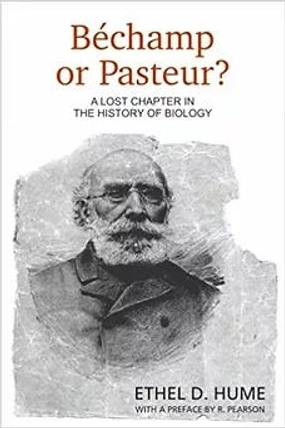
As Dr. Young describes monomorphism: “Underlying the birth of virology was the doctrine of monomorphism-that all microorganisms … are fixed species, unchangeable; that each pathological type produces (usually) only one specific disease; that microforms never arise endogenously … monomorphic or germ theorists stress invasion and infection from the outside world.”
By 1910, the globalists of the day, Rockefeller and Carnegie, began an effort to capture and monopolize the entire medical industry in the United States.
They used a theory of economic efficiency that earlier globalists had promoted through Karl Marx, that a central planning source of economic allocation would serve the public interest by allocating resources to areas of public need and would not over-allocate resources. In reality, this was a thinly-veiled strategy for the globalists to monopolize all industry for themselves through their central planner.
They financed the “Flexner Report,” a project to identify and research every medical school in the United States. They said too many of the schools taught the same thing and that they were unnecessary (Marxism). They said the herbalists were unscientific.
They made the “Godfather” offer to medical schools. They divided the schools into two camps: The haves and the have nots, based on their income levels. They essentially purchased the industry with donations. If the schools took their money, of course agreeing to their terms, they were professional. If not, they were a danger to society.
Flexner:
“(1). For twenty-five years past there has been an enormous over-production of uneducated and ill trained medical practitioners.”
“(2). Over-production of ill trained men is due in the main to the existence of a very large number of commercial schools, sustained in many cases by advertising methods through which a mass of unprepared youth is drawn out of industrial occupations into the study of medicine.”
“(3). …The inadequacy of many of these schools may be judged from the fact that nearly half of our medical schools have incomes below $10,000, and these incomes determine the quality of instruction that they can and do offer.”
“(4). The existence of many of these unnecessary and inadequate medical schools has been defended by the argument that a poor medical school is justified in the interest of the poor boy. It is clear that the poor boy has no right to go into any profession for which he is not willing to obtain adequate preparation…”
“(5). A hospital under complete educational control is as necessary to a medical school as is a laboratory or a chemistry or pathology.”
100 Years After the Flexner Report: The Flexner report seemed to have a substantial impact on medical schools. Within 20 years after the report’s publication, the original 131 medical schools from 1910 were reduced to 76, although not 31 as Flexner originally suggested.
Getting back to the point, after the monopolization of the healthcare industry by globalists, Pasteur’s “germ theory of disease” came to be the accepted theory of disease. Germ theory holds that to kill disease you must kill germs, as opposed to living healthy and to avoid the creation of toxins in our cells that lead to microforms which evolve into the things we call germs. (Read Dr. Young’s article).
One thing is for sure, there’s a lot more money in selling chemical treatments than there is in telling people to live a healthy lifestyle. They were up to $1.25 trillion a year before the Pandemic.
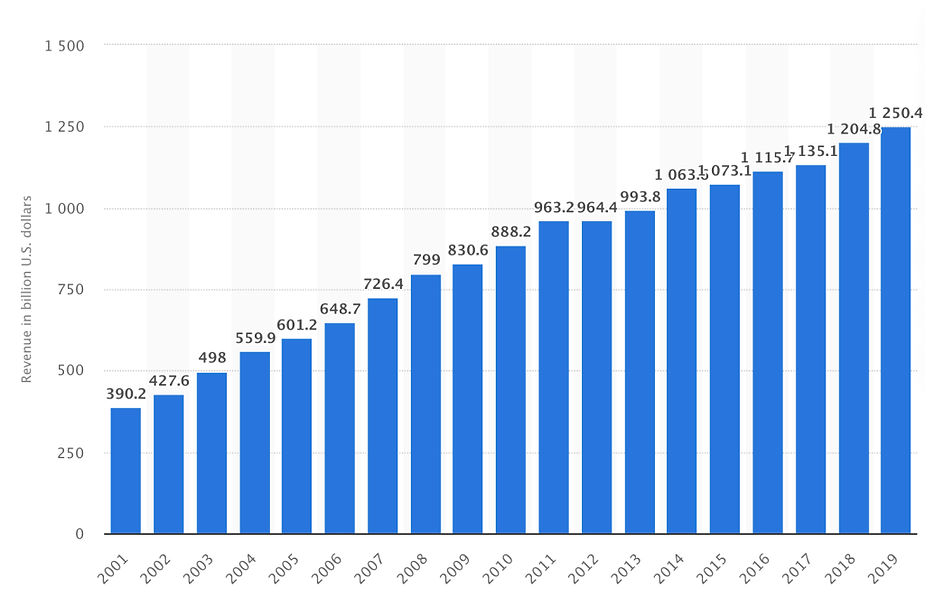
I should also point out here: “In a perfectly competitive market, firms can only experience profits or losses in the short run. In the long run, profits and losses are eliminated because an infinite number of firms are producing infinitely divisible, homogeneous products.” The profit/revenue growth of pharma certainly implies that they do not operate in a competitive market. It also implies that they are not curing disease.
For instance, back in 2012, MIT Tech Review wrote of Moderna’s new mRNA-based disease treatments that are selling so well today: “Unlike many gene therapies, which could potentially be curative, in Moderna’s case the patient will need to be dosed with the mRNA over and over again. Think ‘recurring revenue stream.””
But that doesn’t mean that the industry establishment is wrong about the germ theory of disease, just that they have a huge financial conflict of interest, and that they are evil and only care about money.
Today, Dr. Robert Young enters the Pleomorphism vs Monomorphism debate, siding with Bechamp:
“The entire fabric of the germ theory of disease rests upon assumptions which not only have not been proved, but which are incapable of proof, and many of them can be proved to be the reverse of truth.”
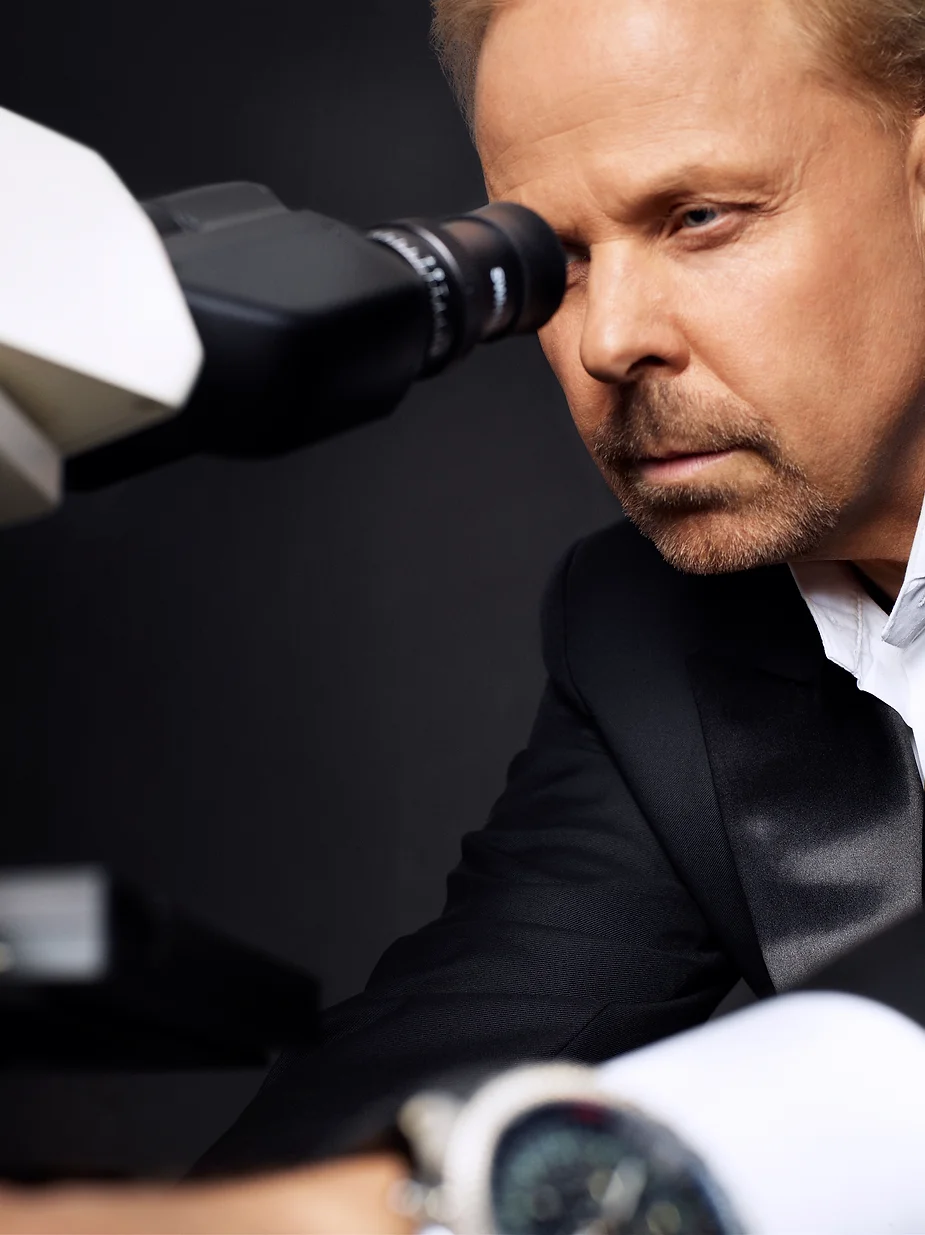
Thus far, I have considered 4 origins of the COVID-19 Pandemic.
First, the “natural spillover” hypothesis from bats to an intermediate host animal then to humans, championed by people like Peter Daszak, Anthony Fauci, and Michael Worobey. I place the odds of natural spillover at 0% because the SARS2 virus has been described as modified by man by multiple publications, and they seem correct.
Second, the “Wuhan Lab Leak” narrative of the SARS2 virus. This theory appears to be advanced by Mike Pompeo and the CIA to outlets like Sharri Markson, DRASTIC, and the Intercept. As I consider Mike Pompeo and the CIA to be an evil and untrustworthy source of information, I place the odds that this theory is truthful at a low percent – 1%. I cannot rule it out though. I just doubt that if you’re going to make a “Plandemic” that you will leave a trail of evidence right to the source.
Third, the intentional release of a virus created as a WMD project at another lab – Lugar Center – in a manner to frame the Wuhan Institute of Virology for a crime that will never be proven, thus covering the CIA’s tracks with a predetermined false “Wuhan Lab Leak” media narrative. But this theory has low odds as well, say 2%- it is just more likely than the Wuhan Lab Leak narrative based on criminal behavior theory and some other supporting circumstantial evidence surrounding Lugar Center.
Fourth, I now consider the possibility that the SARS2 virus never spread person-to-person from the Huanan Seafood market to the rest of the world in the manner it’s been reported to have spread. Dr. Young: “coronavirus is not a virus that infects the cell but an exosome which is endogenously created and released by the cell as a repair protein.”
OK, I’m not sure what that implies in the context of the COVID-19 Pandemic. Does Dr. Young believe that a disease spread from person-to-person from the Huanan Seafood market, and if so, what was the nature of the disease, if not a coronavirus?
I suppose it is possible that the media drove a fearful narrative to make people take faulty tests that would return a percentage of false positives, thus creating the appearance of a virus spreading.
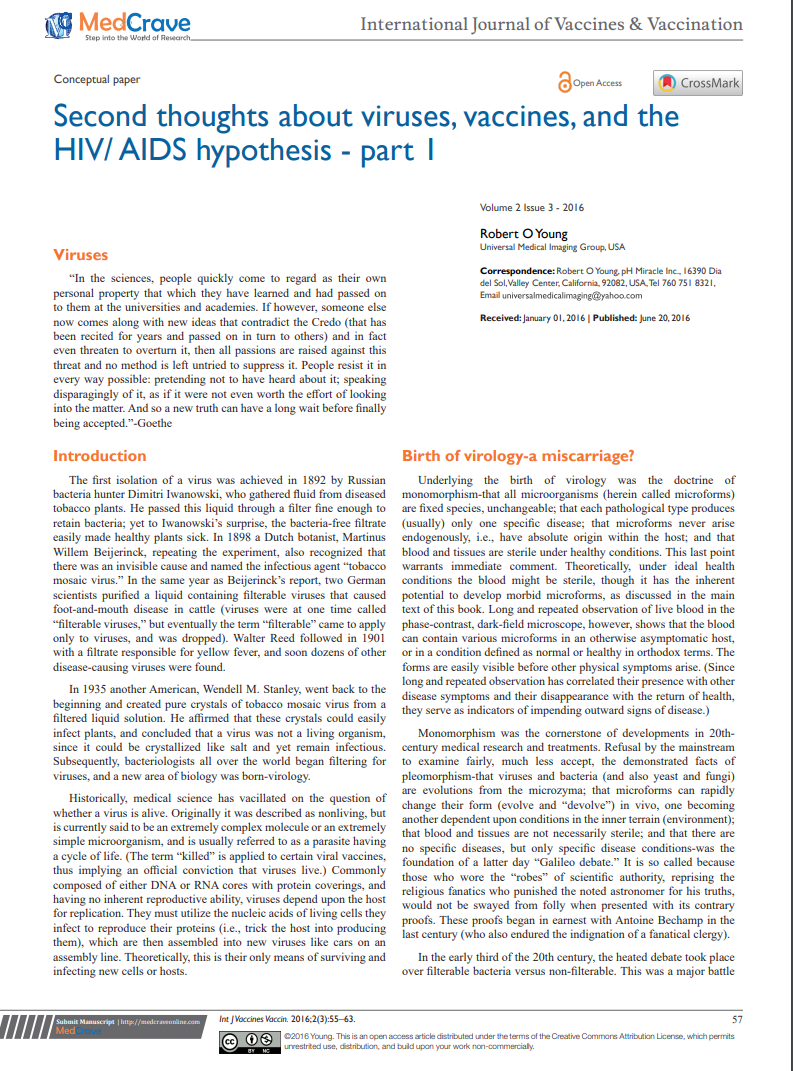

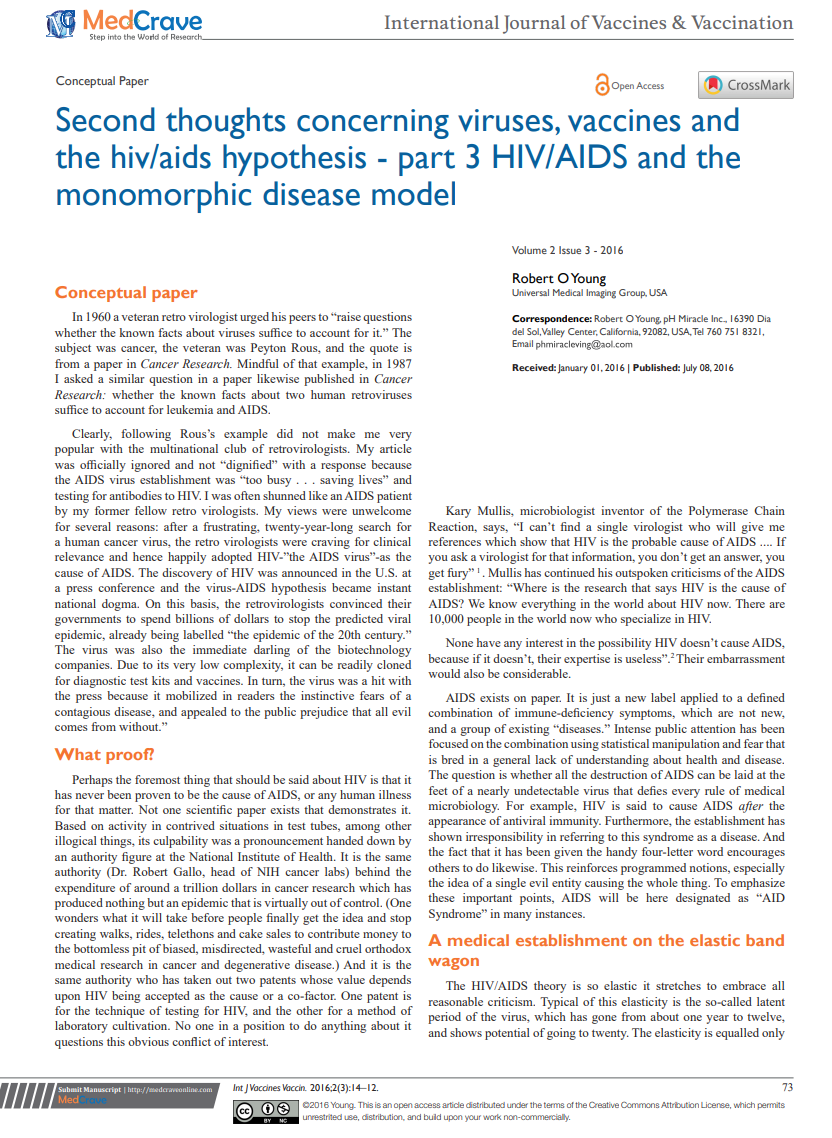
My main reservation with the fourth theory (which I suppose Young would support) is that doctors like Drs. Zelenko, Moscowitz, and Kory were treating what they believed to be SARS2 in 2020 before the vaccines were released with hydroxychloroquine, quercetin, and ivermectin. All these doctors appear to be good people who were trying to do the right thing. They were treating something.
Once the vaccines were released, of course, clearly they became the primary driver of disease and death in the population, along with other poisons like Remdesivir (which killed many people in the media and government reported “unvaccinated” category).
Anyway, food for thought. I highly recommend that you read the article referenced by Dr. Young and think about it.
Charles Wright
PS Learn the Truth About the Cause of Corona and the Plandemic – Read, “The Elephant in the Room – Electromagnetic Frequencies (EMF) & Graphene Ferric Oxide” and Scanning & Transmission Electron Microscopy Reveals Graphene & Parasites in CoV-19 Vaccines
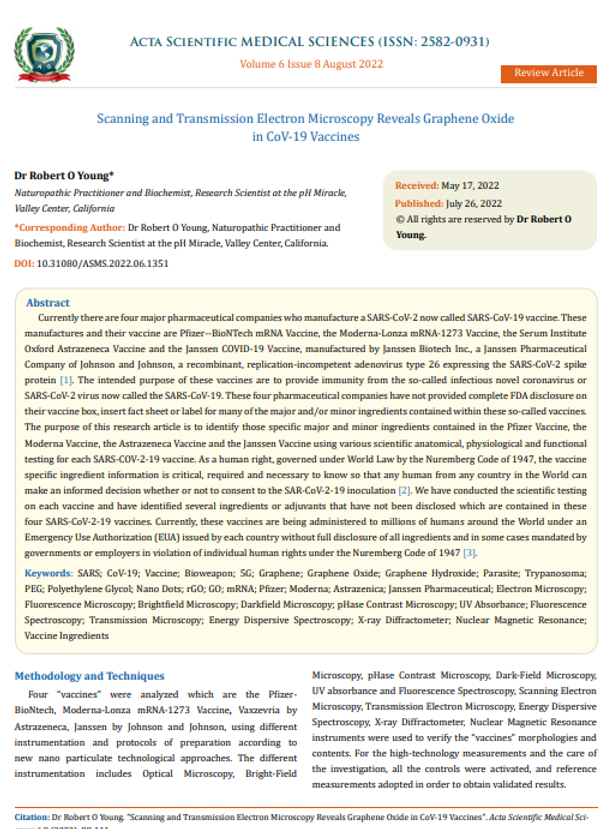
To more about the work, research and findings of Dr. Robert O. Young go to: www.drrobertyoung.com
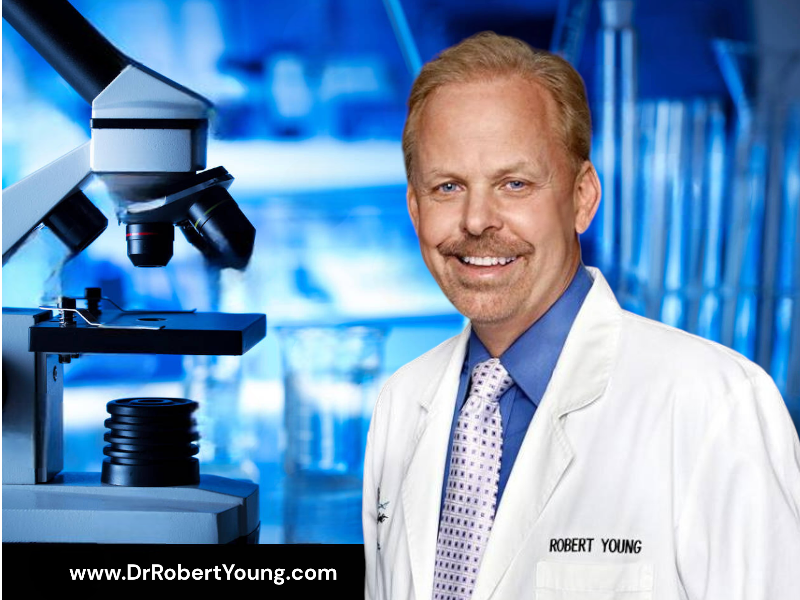
To support the work and research of Dr. Robert O. Young go to: www.givesendgo.com/research
